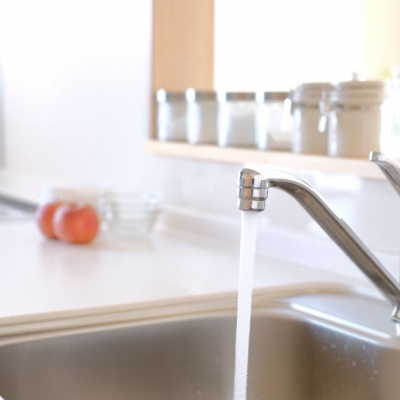How to be sure of years of use from your kitchen
 5
5May '16
Whenever you visit a house for the first time, your biggest impression of how it has been looked after will come from taking a good look at the kitchen.
If it has been hardly touched for several years, and looks stuck in the past, it will be immediately obvious. Colour-wise, any sign of beige - in decor or fittings - is a fair sign that there hasn’t been any attention given to how it looks for at least three decades, and so an update would do it a big favour.
Equally, a kitchen which was designed for users in their twenties or thirties which is still in place when those owners have reached their fifties or sixties might well not be the most convenient and comfortable to use.
The problem is that many people who have the funds to enable them to embark on a major kitchen redesign when they are in their younger years don’t really want to think about how practical that design will still be when they might not be as physically able as when they were in their prime.
A list of the most desirable features which can ensure that a kitchen remains as user-friendly to people as it was when it was first installed many years further on, would include the following:
- Easy-to-reach storage: Kitchen planner Paula Kennedy says as much space for storing all your useful implements should be sited between knee and eye level. Slide-out units and glass doors make it easier for you to see what’s inside any drawer or cupboard so you don’t have to waste time opening doors when you’re not totally sure what’s behind them.
- Work surfaces of varying heights: There might be an accepted standard height for most kitchen tops, but what if you want to share the joy of food preparation, cooking and baking with your little ones? Their view of what you’re doing is likely to be limited at best, so many top designers recommend the addition of some work areas with tops slightly lower to address this.
- As you get older (it comes to all of us) and your legs, arms and back aren’t as strong as they once were, you might find a slightly lowered work area a real boon.
- Sinks and taps: Taps which need as little hand movement to turn them on and off as possible are an increasingly popular feature, with a lever to control both water temperature and pressure making it easier to continue to be able to have the level of control you’re used to as you get older. If you still use your sink for washing dishes, even occasionally, perhaps consider fitting a shallower sink so you can easily reach its bottom.
- Lights and sockets: When you need to see to work, you’ll find LED lighting much less harsh than strip or spotlights. LED bulbs will also need replacing far less often so you won’t have the problem quite so regularly of having to reach into those fiddly light fittings. Power sockets under shelves and counters can also be easier for you to reach that those in regular spots on a wall or just about the skirting board.
- Flooring: Make sure your floor covering minimises the risk of slipping or tripping. It should also be as easy as possible to clean. Think about making your flooring a colour which contrasts strongly with your floor units, as this will make it easier for you to see the edges of all your cabinets - you’ll appreciate this if you find your eyesight starting to fail!
- Doorways: A standard width has probably served you well for many years. But if feasible, you could appreciate widening your entrances by a few extra centimetres. You might really appreciate this extra space if you have to manoeuvre a buggy or pushchair into and out of the room, but you should also consider that you might need the extra room to manoeuvre at some stage to accommodate a wheelchair, or even just make it easier to get through with a walking frame.
- In addition, today it’s possible to buy a wide variety of kitchen utensils designed to be used by people whose manual dexterity is less than perfect, which could mean you being able to fully enjoy the facilities of a much-loved and well-used kitchen even when you aren’t as agile as you used to be.
Members of the KBSA offer you the benefit of vast experience of designing and fitting kitchens which will last for many years. So if you want to be sure of being able to make good use of all your kitchen’s features well into your later years, seek out your nearest member suppliers and installers for advice.
